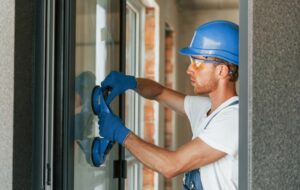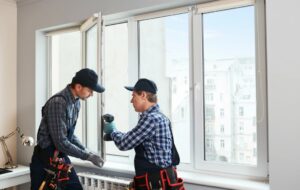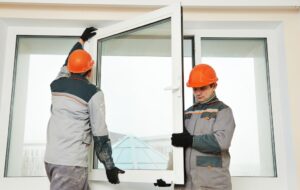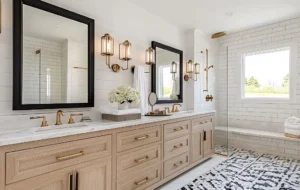When it comes to home improvement and interior design, choosing the right railing system can significantly impact the aesthetics and functionality of your space. Among the various options available, glass railings have gained immense popularity due to their modern appeal and versatility. In this blog, we will delve into the differences between indoor traditional railings and indoor glass railings, highlighting the benefits and considerations for each, to help you make an informed decision for your home.
The Aesthetic Appeal of Glass Railings
Glass railings are synonymous with modern elegance and are often favored for their sleek, minimalist look. They provide an unobstructed view, allowing natural light to flow freely through spaces and making areas appear more open and spacious. This feature is particularly beneficial in homes with scenic views or in areas where maximizing visual space is a priority.
There are various types of glass railing systems to consider:
- Frameless Glass Railings: These railings offer a luxurious, unimpeded view and are commonly used in high-end buildings and modern homes. The glass panels are held in place by minimal hardware, usually at the base or with side-mounted pins, creating a seamless look.
- Framed Glass Railings: This option provides more structural support with frames around the glass panels. While still offering great visibility, the frames add an additional design element that can be customized to match other interior features.
Glass Stair Railings and Modern Interior Design
One of the biggest reasons homeowners and designers are switching to indoor glass stair railings is their impact on modern aesthetics. Glass allows for uninterrupted views and makes even compact staircases appear more open and elegant.
In commercial spaces, glass stair landings can completely transform the atmosphere. If you’ve ever wondered “how do glass stair landings impact the aesthetics of commercial spaces?” — the answer lies in their ability to create visual continuity. The use of glass enhances natural light, increases perceived space, and provides a high-end architectural touch that metal or wood railings simply can’t match.
Benefits of Glass Railings
- Enhanced Aesthetics: Glass railings significantly enhance the visual appeal of both interior and exterior spaces. They blend well with various design styles, from contemporary to classic, and can be customized with different types of glass, such as frosted, tinted, or textured.
- Durability: Made from tempered or laminated glass, these railings are incredibly strong and safe. Tempered glass, in particular, is designed to shatter into small, blunt pieces, reducing the risk of injury if broken.
- Low Maintenance: Unlike wood, which can warp and require regular painting, or metal, which can rust, glass railings are relatively low-maintenance. They can be cleaned easily with standard glass cleaners, making them a practical choice for busy households.
- Increased Property Value: Installing glass railings can enhance the resale value of your property by adding a touch of luxury and sophistication that appeals to potential buyers.
What Kind of Glass Is Used for Railings?
When selecting glass railing indoor systems, the type of glass plays a vital role in both safety and appearance. Most interior glass railings use tempered or laminated glass, engineered for strength and durability.
- Tempered glass is heat-treated to be four times stronger than regular glass and, if broken, shatters into blunt fragments for safety.
- Laminated glass consists of multiple layers with a plastic interlayer, ensuring the glass stays intact even if cracked — ideal for areas requiring added safety, such as staircases or mezzanines.
Homeowners can also choose frosted or tinted glass to add a touch of privacy or style without sacrificing light flow.
Considerations for Glass Railings
Despite their many benefits, glass railings also come with certain considerations:
- Cost: Glass railings are generally more expensive than traditional wood or metal railings. The price can vary depending on the type of glass and installation complexity. However, many homeowners find the investment worthwhile due to the aesthetic and practical benefits.
- Privacy Concerns: The transparency of glass railings may not provide the level of privacy some homeowners desire. This can be mitigated by opting for frosted or tinted glass panels.
- Cleaning Requirements: While glass railings are low-maintenance overall, they do require regular cleaning to maintain their clarity and aesthetic appeal, especially in high-traffic areas where fingerprints and smudges are common.
Glass Railing vs. Steel Railing Cost: Which Is Better for You?
A common question homeowners ask is about glass railing vs. steel railing cost. While steel railings generally cost less upfront, glass railings offer long-term value by requiring minimal maintenance and elevating your home’s resale appeal.
Here’s a quick comparison:
- Steel Railings: Affordable and durable but may rust over time and require repainting.
- Glass Railings: Higher initial investment but low upkeep, rust-free, and visually luxurious.
Ultimately, if you’re designing for light, openness, and sophistication, glass is the smarter investment for indoor applications.
Indoor Traditional Railings
Indoor railings come in various materials, including wood, metal, and cable systems, each offering unique benefits and drawbacks:
- Wood Railings: Known for their classic and warm appearance, wood railings can be customized with different stains and finishes. They are sturdy and provide a solid, traditional look. However, they require regular maintenance to prevent issues like warping and splintering.
- Metal Railings: Metal railings, such as wrought iron or stainless steel, offer a modern and industrial look. They are durable and can be shaped into intricate designs, adding a decorative element to your home. On the downside, metal railings can rust if not properly maintained.
- Cable Railings: These railings use tensioned cables and posts to create a sleek, unobtrusive barrier. They are excellent for modern homes and provide minimal visual obstruction. Cable railings are also relatively easy to maintain but might not offer the same level of durability as glass or metal.
Blending Traditional and Glass Elements
You don’t have to choose one style exclusively — many homeowners today are combining glass and traditional railings to achieve a balanced design. For instance, pairing wood handrails with glass panels creates a warm yet contemporary appearance, while metal frames around glass can introduce an industrial edge.
This hybrid approach allows you to enjoy the elegance of glass with the comfort of classic materials, making your interior glass railing both functional and timeless.
Choosing between traditional interior railings and glass interior railings ultimately depends on your personal preferences, budget, and the specific needs of your home. Glass railings offer unmatched aesthetic appeal and modern elegance, making spaces feel larger and more open. They are durable, low-maintenance, and can significantly enhance the value of your property.
If you are considering a railing upgrade for your home, it is essential to weigh these factors and consult with professionals to determine the best option for your space. For more information and to explore a wide range of glass railing options, call Shower Door Masters at (949) 966-0601.
FAQs About Indoor Glass Railings vs. Traditional Railings:
1. How do glass stair landings impact the aesthetics of commercial spaces?
Glass stair landings enhance brightness and openness, creating a contemporary, professional look that makes spaces appear larger and more refined.
2. What kind of glass is used for railings?
Tempered or laminated glass is typically used for railings because of its safety, strength, and durability. Frosted and tinted options add privacy and design flexibility.
3. Are glass railings safe for indoor staircases?
Yes. Modern glass railings are made from impact-resistant materials and comply with safety codes, making them suitable for both residential and commercial spaces.
4. Which is more cost-effective: glass or steel railings?
Steel railings have a lower upfront cost, but glass railings offer greater long-term value through low maintenance and improved aesthetics that can boost property value.
5. Do glass railings require high maintenance?
Not at all. Regular glass cleaning is sufficient to keep them spotless, and they’re resistant to corrosion and wear — unlike wood or metal alternatives.







